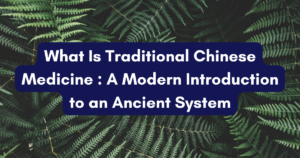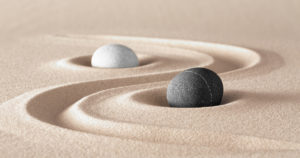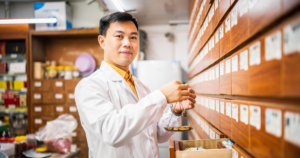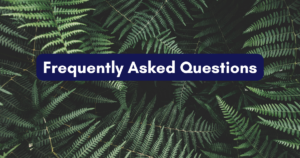
What Is Traditional Chinese Medicine? A Modern Introduction to an Ancient System

Traditional Chinese Medicine (TCM) has been practised for over 2,000 years, but its relevance in modern healthcare continues to grow. From acupuncture clinics in London to university TCM programmes across Europe, this ancient system of healing is undergoing a contemporary renaissance. But what exactly is TCM, and why is it increasingly seen as a valuable complement to Western medicine?
This article offers a clear, accessible introduction to Traditional Chinese Medicine for newcomers and students. Whether you’re exploring career options in complementary medicine, seeking holistic wellness strategies, or simply curious about the East Asian approach to health, this guide demystifies TCM’s core concepts, treatment methods, and modern applications.
The Philosophy Behind TCM
At the heart of Traditional Chinese Medicine lies a holistic worldview: the idea that the human body is an integrated whole, inseparable from nature and influenced by internal and external factors. TCM is rooted in classical Chinese philosophy, particularly Daoism, which emphasises harmony, balance, and the dynamic flow of energy known as Qi.
Unlike Western medicine, which often isolates disease within specific organs or systems, TCM sees health as a state of dynamic balance between opposing yet interdependent forces: Yin and Yang.
Yin and Yang
These are the foundational dualities in Chinese thought:
- Yin represents coolness, rest, substance, and inward movement.
- Yang symbolises heat, activity, energy, and outward expansion.
Health is maintained when Yin and Yang are balanced. Illness arises when one dominates or when their relationship is disrupted.
The Five Elements (Wu Xing)
Another core concept is the theory of the Five Elements: Wood, Fire, Earth, Metal, and Water. These elements symbolise processes and relationships in nature, the body, and disease patterns. Each organ system corresponds to an element and has emotional, sensory, and seasonal associations. Understanding these interrelationships helps practitioners diagnose and treat imbalances.
Diagnostic Principles
Diagnosis in TCM is both an art and a science. Practitioners use a range of sensory and observational techniques to understand the patient’s internal state.
The Four Examinations:
- Looking (particularly at the tongue)
- Listening and Smelling (voice, breath, body odour)
- Asking (about symptoms, lifestyle, emotional state)
- Palpation (especially pulse diagnosis)
TCM tongue and pulse diagnosis are particularly distinctive. The tongue reflects internal organ health and fluid status, while the pulse—felt at three positions on each wrist—offers insight into the flow and quality of Qi and Blood.
Treatment Methods
TCM uses a variety of treatment methods tailored to the individual’s constitution and pattern of imbalance. Each therapy aims to restore harmony within the body, support natural healing, and prevent disease.
- Acupuncture
Inserting fine needles into specific points on the body to regulate Qi flow. It’s widely used for pain, stress, fertility, and more.
- Chinese Herbal Medicine
Customised herbal formulas—often complex combinations of plant, mineral, and sometimes animal substances—used to target specific patterns of disharmony.
- Tuina (Therapeutic Massage)
A form of medical massage that combines acupressure, stretching, and manipulation techniques.
- Cupping and Moxibustion
- Cupping uses suction to draw out stagnation and stimulate circulation.
- Moxibustion involves burning mugwort (moxa) near the skin to warm meridians and stimulate Qi.
- Qigong and Tai Chi
Mind-body practices combining movement, breath control, and meditation to cultivate Qi and improve health.
Evidence and Integration with Modern Medicine
Although rooted in ancient cosmology, TCM is being increasingly integrated into evidence-based healthcare. The World Health Organization recognises TCM as a traditional system of medicine, and growing numbers of clinical studies support its efficacy in treating conditions such as:
- Chronic pain
- Migraine
- Infertility
- Allergies
- Anxiety and depression
- IBS and digestive disorders
Many hospitals in China operate integrative models where TCM is offered alongside biomedical care. In the UK, institutions like CCMUK are advancing practitioner education, clinical standards, and cross-disciplinary research.
Is TCM Safe?
When practised by qualified professionals, TCM is generally considered safe. However, it’s crucial to:
- Consult a registered practitioner (e.g., members of ATCM or BAcC)
- Use only quality-assured herbal products
- Inform your GP of any complementary treatments
Who Can Benefit from TCM?
TCM is used by people of all ages and backgrounds. It can be especially helpful for:
- Those seeking preventative or holistic care
- Patients with chronic or unexplained symptoms
- Individuals undergoing major life transitions (e.g., menopause, stress, post-viral fatigue)
FAQ: Traditional Chinese Medicine
Q: Is TCM the same as acupuncture? A: Acupuncture is one component of TCM. The full system includes herbal medicine, diagnostics, dietary therapy, massage, and movement practices like Qigong.
Q: How long does TCM treatment take to work? A: It varies. Acute conditions may respond quickly; chronic issues often require sustained treatment and lifestyle changes.
Q: Is there scientific proof that TCM works? A: Yes, particularly for acupuncture and certain herbs. However, not all aspects have been studied with Western scientific methods. Integration of traditional and modern approaches is ongoing.
Q: Can I use TCM alongside conventional medicine? A: Often, yes. Many people use TCM as a complement to Western treatment. It’s essential to inform all your healthcare providers.
Q: How do I find a reputable TCM practitioner? A: In the UK, look for practitioners registered with professional bodies such as the Association of Traditional Chinese Medicine (ATCM) or British Acupuncture Council (BAcC).
Final Thoughts
Traditional Chinese Medicine offers a time-tested, holistic approach to health and healing. Its philosophies of balance, connection, and prevention resonate strongly in a modern world seeking more integrative models of care. Whether you’re a student, a health professional, or someone exploring new ways to feel better, TCM provides a rich, evolving framework worthy of deeper exploration.
To learn more, explore accredited training opportunities, and connect with experienced practitioners, visit ccmuk.org







